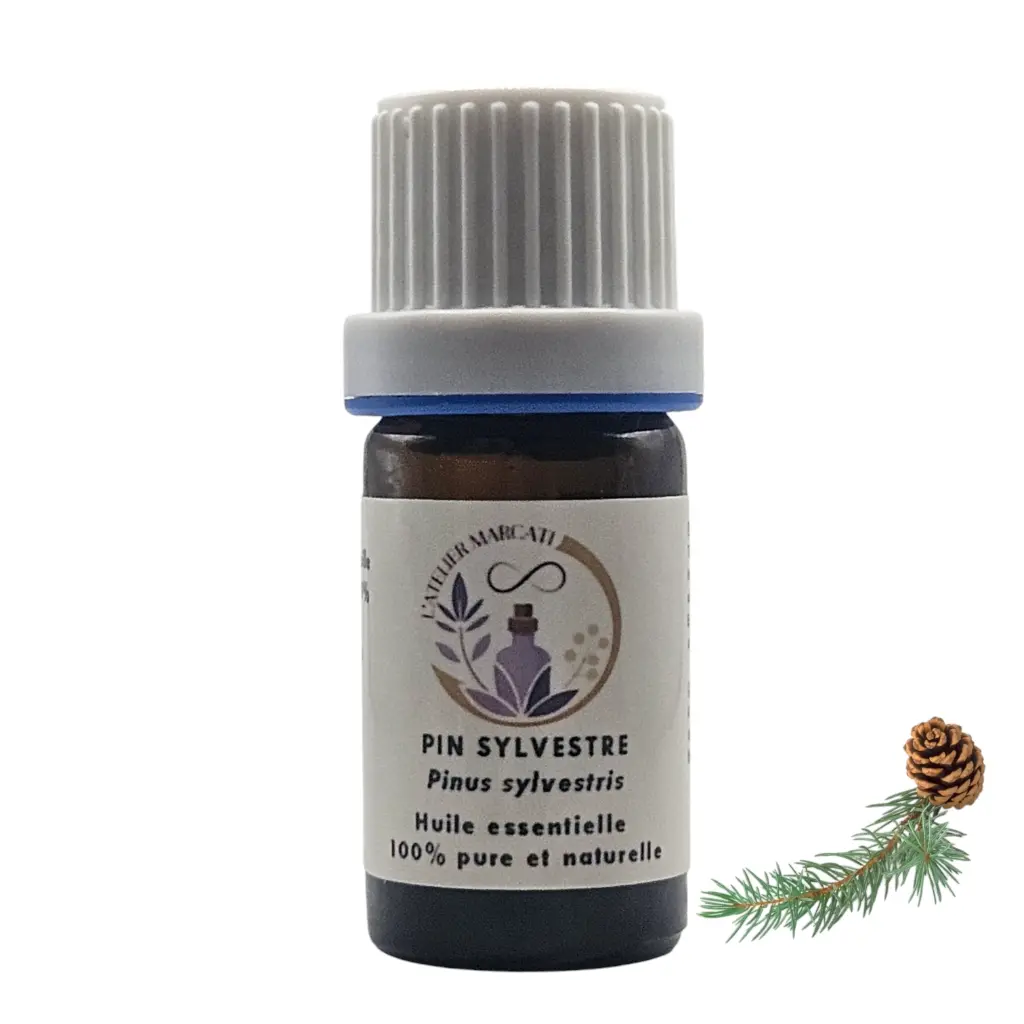Huile Essentielle Pin Sylvestre
Nom botanique: Pinus sylvestris

Chémotype et indications
Carte d'identité
Nom franais: Pin Sylvestre
Nom botanique: Pinus sylvestris
Partie distillée: Aiguille
Famille botanique: Pinacées
Origine: Bulgarie
Composition chimique:
- Esters: Acétate de Bornyle (jusque 10%)
- Monoterpènes: Alpha et Béta Pinène (40 et 13%), Limonène (25 à 30%)
- Monotérpénols: Alpha Cadinol
- Sesquiterpènes: Longifolène
- Sesquiterpénols
Propriétés physiques et indications thérapeutiques
- Antihistaminique*
- Anti-inflammatoire*
- Arthrite*
- Polyarthrite rhumatoïde*
- Asthénie*, fatigue*
- Asthme*
- Bronchite*, Toux*, Sinusite*
- Hypotension*
- Cortisone-like (Axe hypophyso-cortico-surrénalien**)
Propriétés émotionnelles, psychiques et indications thérapeutiques
- Stress*
- Surmenage nerveuse
- Excitation
- Dépression hivernale
- Epuisement nerveux
Informations complémentaires
Danger:
Risque de réactions allergiques et cutanées
Utiliser au goutte à goutte
Légende: * puissant,** très puissant;*** extrêmement puissant (valeur de puissance pour la pathologie associée)
Référence et source bibliographique: Lily BAYER et Dr Hervé STAUB, (2013) "Traité approfondi de Phyto et Aromathérapie", Ed. Grancher. p. 624.
LES INDICATIONS EN AROMATHERAPIE ET L'USAGE DES HUILES ESSENTIELLES NE CONSTITUENT PAS UN DIAGNOSTIC MEDICAL ET NE REMPLACENT PAS L'AVIS D'UN MEDECIN NI LES TRAITEMENTS MEDICAUX !



